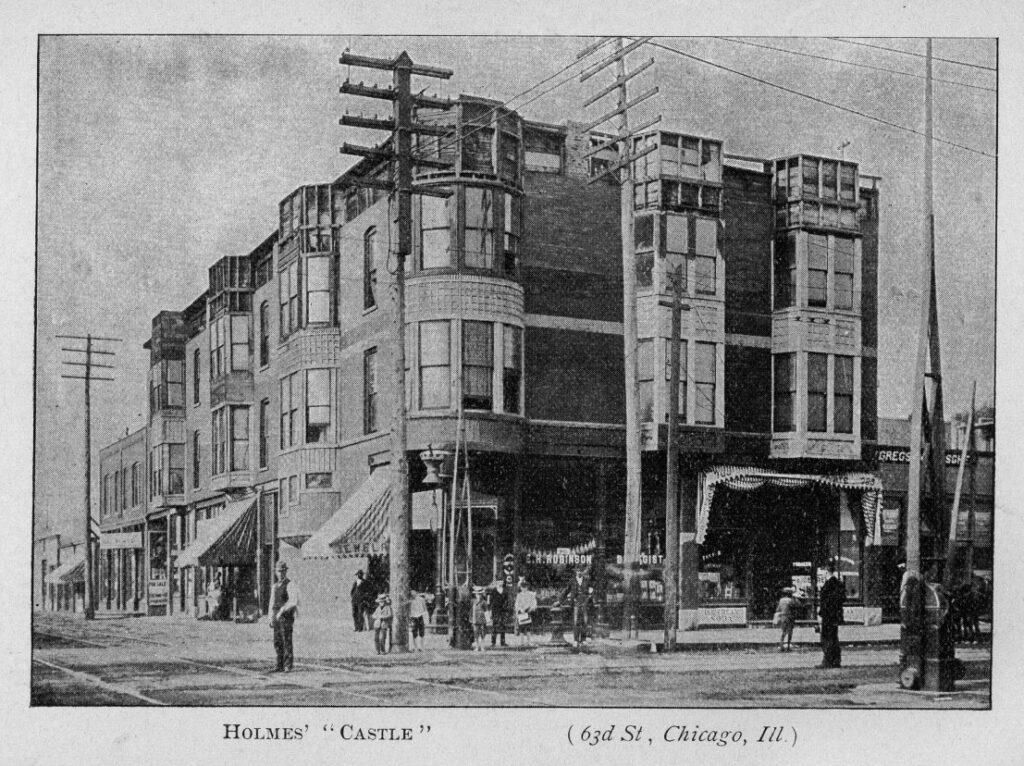
(Or, Good Grief—MORE H.H. Holmes)
If you ever find yourself standing in front of the Englewood post office at 63rd and Wallace, you’re technically standing near the site of one of the most infamous crime scenes in American history—or at least what’s left of it.
This was once home to the so-called “Murder Castle” of H.H. Holmes, a structure as bizarre as the legend that surrounds it. The three-story hotel-like building became notorious in the late 19th century for its labyrinthine design, hidden passages, and rumors of gruesome murders.
Holmes, a man of many identities and even more scams, would later be labeled America’s first serial killer, with newspapers of the time spinning ghoulish tales of trapdoors, gas chambers, and secret dissection rooms.
While the truth is murkier than the legends suggest, the site remains one of Chicago’s most enduring crime mysteries—and what still lies beneath the modern post office has fueled speculation for decades.
The Structure of the Murder Castle: A Maze Built for Deception
H.H. Holmes was not just a killer—he was a master con artist first and foremost.
In 1887, he began construction on a three-story building at 63rd and Wallace, originally intended as a pharmacy and commercial space with apartments above. But Holmes, ever the fraudster, hired and fired multiple contractors throughout construction, ensuring that no one but him fully understood the layout of the building.
By the time the 1893 World’s Fair brought thousands of tourists to Chicago, the so-called “Murder Castle” was operational.
What made it so infamous? The interior was an architectural nightmare, with features that seemed designed for deception, secrecy, and possibly murder.
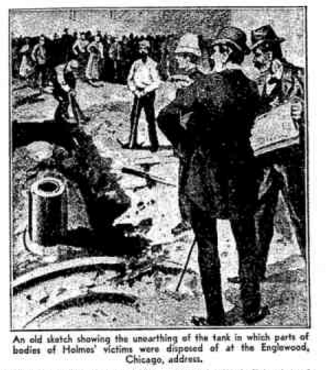
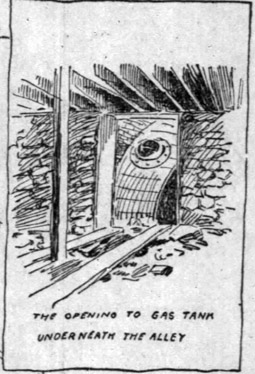

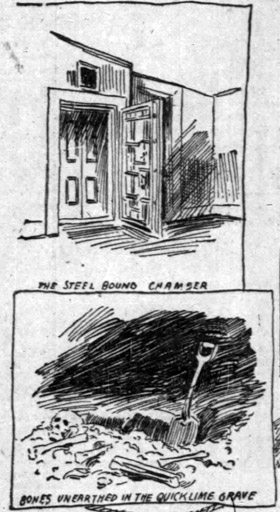
Some of the most notorious design elements included:
- Hallways that led nowhere – Doors that opened into brick walls, staircases that ended abruptly, and windows leading to interior shafts.
- Trapdoors and hidden rooms – Concealed chambers, false partitions, and a network of passageways that Holmes used to move unseen through the building.
- Soundproof rooms – Some rooms were reportedly sealed off completely, creating isolated areas where screams wouldn’t be heard.
- A gas chamber? – According to some reports, a room outfitted with gas pipes allowed Holmes to asphyxiate victims at will.
- A basement for body disposal – The lower level allegedly contained a dissecting table, quicklime pits, and a large kiln, which some believed was used to dispose of remains.
While some of these more grotesque details were exaggerated by sensationalist newspapers, one thing is certain—Holmes designed the building to confuse, mislead, and conceal.
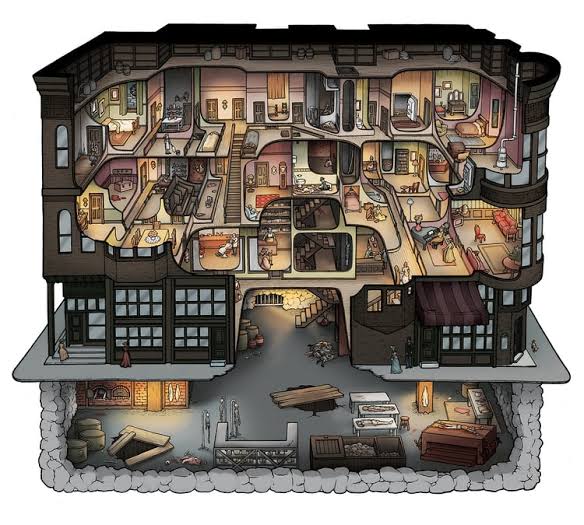
Who Was H.H. Holmes?
Dr. Henry Howard Holmes (born Herman Webster Mudgett) was a man of many faces—a charismatic swindler, a career fraudster, and, eventually, a convicted murderer.
Born in 1861 in New Hampshire, Holmes was highly intelligent but displayed sociopathic tendencies from an early age. He studied medicine at the University of Michigan, where he reportedly stole cadavers from the anatomy lab, using them for insurance scams and bizarre experiments.
By the time he arrived in Chicago in the late 1880s, he had already adopted the alias H.H. Holmes and established himself as a charming yet deeply manipulative figure.
He was an opportunist above all else—and while his murderous reputation has been inflated over time, he was undoubtedly a dangerous man who left a trail of missing people and fraudulent schemes wherever he went.
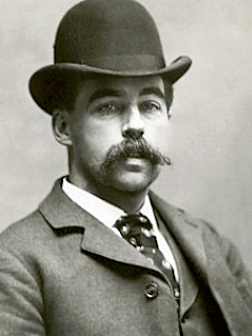
How Many People Did He Really Kill?
Holmes himself confessed to 27 murders, but many of those turned out to be fabricated—some of the supposed victims were later found alive.
Modern estimates suggest that he likely killed between 9 and 12 people, though some claim the number could be much higher. The widely circulated figure of 200 victims is largely a product of Hollywood-style mythmaking rather than hard evidence.
Holmes’ undoing came in 1894 when he was arrested for insurance fraud. Soon, investigators began digging into his past, uncovering a web of deception, missing persons cases, and undeniable evidence of murder.
By 1895, the so-called Murder Castle was searched extensively by authorities, and while they found evidence of foul play, the structure was more of a money-making scheme than a slaughterhouse.
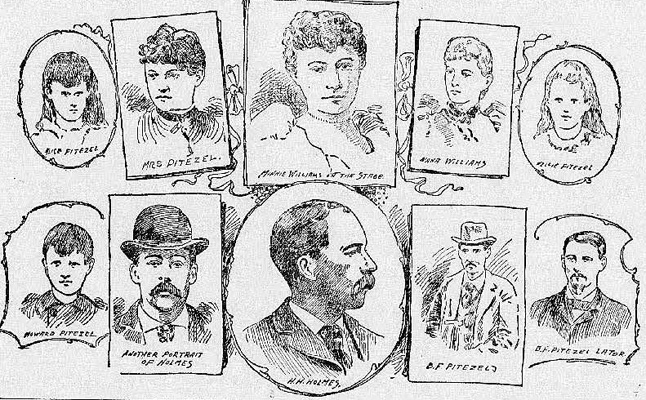
What Happened to the Murder Castle?
After Holmes was hanged in 1896, his castle remained standing for over 40 years.
Contrary to popular belief:
- It did NOT burn to the ground in 1895.
- It was still in use until 1938, serving as a multi-use commercial building.
- It was demolished to make way for the post office, not because of some supernatural curse.
Yet, despite its destruction, rumors have persisted about what still exists beneath the modern structure.
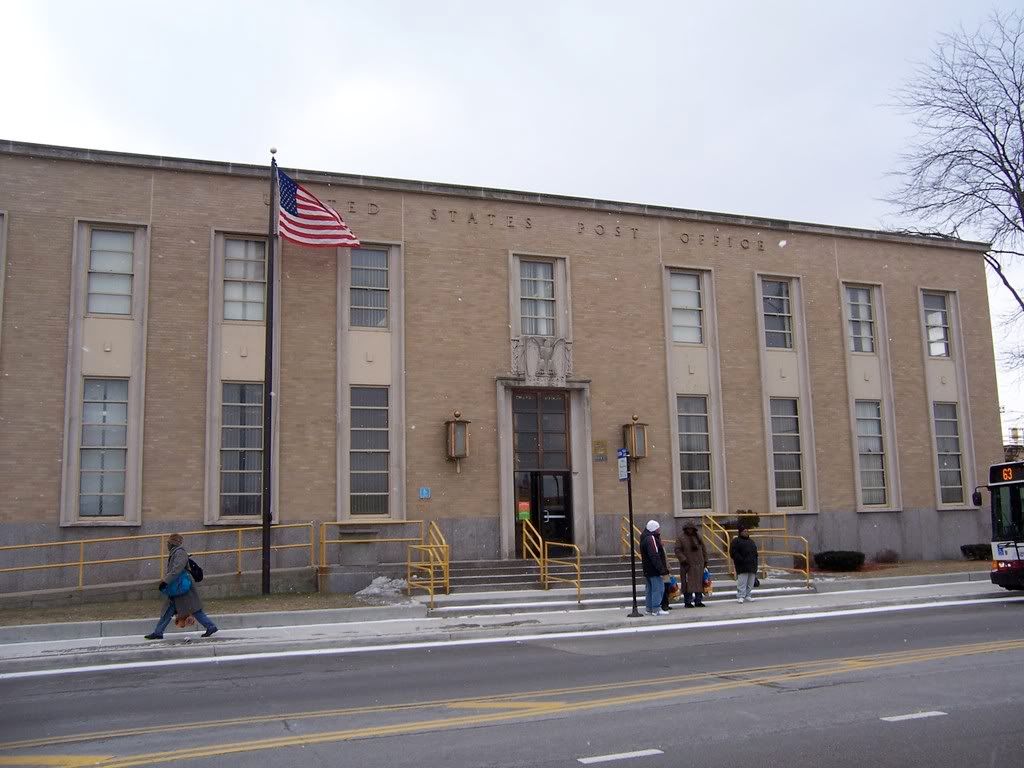
What’s Really in the Post Office Basement?
Over the years, stories have circulated about tunnels, hidden rooms, and old foundations still lurking below the modern post office.
Mysterious Chicago had the rare opportunity to explore the basement as part of a History Channel investigation, uncovering:
- Bricked-off tunnels that some claim could have been part of Holmes’ escape routes.

- Old fire-scorched bricks that may have been remnants of the castle’s original foundation.
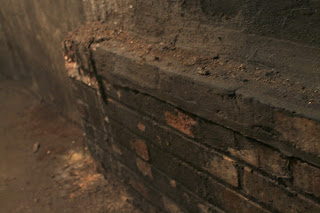
- Crawl spaces leading into areas never fully explored.
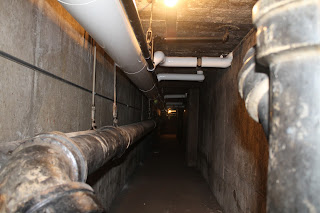
Postal workers have reported strange occurrences over the years, but whether these stories are linked to Holmes’ past or simply to the power of urban legend remains an open question.
Is the Site Haunted?
Holmes was hanged more than a century ago, but some believe his presence lingers in Englewood.
Mysterious Chicago has recorded unexplained sounds in the basement, and some claim to have captured ghostly voices on tape.
While skeptics dismiss these as coincidence or urban myth, the site’s dark past has cemented it as one of Chicago’s most infamous locations—and a place where people still feel uneasy.
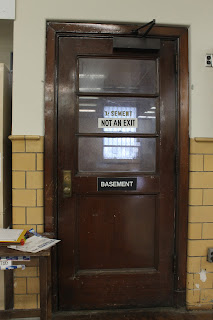
Final Thoughts: The Legacy of H.H. Holmes
Holmes may not have been the “America’s greatest serial killer” that later myths made him out to be, but he was undoubtedly a master manipulator, a dangerous con artist, and a man who likely left far more victims than we’ll ever know.
The Murder Castle is long gone, but its story remains deeply embedded in Chicago’s history—from the mysteries of the post office basement to the legends of ghosts that refuse to leave.
So, if you ever find yourself in Englewood, standing outside that ordinary-looking post office, take a moment.
And maybe don’t linger too long.

Featured image credits: Chicago History Museum/Getty Images





